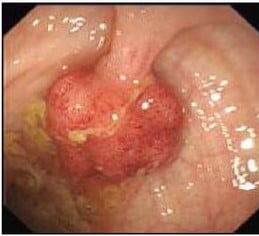What Is ADR Missing?
by Larissa Biggers, on February 22, 2019
According to the American College of Gastroenterologists (ACG), adenoma detection rate (ADR) is “the measurement that best reflects how carefully colonoscopy is performed.“ Defined as the percentage of patients age 50 and older undergoing screening colonoscopy who have one or more precancerous polyps detected, ADR is calculated by dividing the number of procedures in which one or more adenomas is detected by the total number of procedures. An endoscopist’s ADR should be at least 25% for men and 15% for women.
.png?width=450&name=ADR%20(1).png)
ADR as a Quality Indicator
As part of an effort to measure and standardize colonoscopy performance among providers, in 2006 the ACG and the American Society for Gastrointestinal Endoscopy (ASGE) identified ADR as a quality indicator for colonoscopies., and with good reason. On average, for every 1% increase in ADR, there is a 3% decrease in the risk of colorectal cancer (CRC). Furthermore, an endoscopist’s ADR is inversely related to the patient’s post-colonoscopy CRC risk.

Where ADR Falls Short
Although it is unarguably a valuable piece of the CRC puzzle, ADR is not a perfect assessment tool. For instance, it does not:
- measure total adenomas detected
- evaluate an endoscopist’s ability to identify all adenomas in a patient
- differentiate between endoscopists who detect one adenoma and those who detect two or more
Also consider that there is no incentive (in terms of ADR numbers) for providers to discover more than one polyp. After an endoscopist detects one adenoma, his or her ADR is is unaffected by any additional polyps found.
Another Way to Measure
A recent study of quality-adjusted, back-to-back colonoscopies found that adenomas were missed about 17% of the time, even when accounting for variations in bowel preparation, withdrawal time, and cecal intubation. Similarly, a review of 15,152 tandem colonoscopies and 10,852 adenomas found that the average miss rate for adenomas was 26%; for advanced adenomas it was 9%; and for serrated polyps it was 27%. Missed pre-cancerous polyps can result in interval cancers, which occur between scheduled colonoscopies. A study of over 9,000 patients determined that lesions missed during colonoscopy are responsible for 50 to 60% of interval cancers. Interval cancers, in turn, contribute to about 9% of all colorectal cancers.
Calculating endoscopists’ adenoma miss rates (AMRs) could be a valid measurement for all endoscopists, and particularly those with high ADRs who after detecting the first polyp might examine the rest of colon with less care.
Better Patient Outcomes
Endoscopists should still strive to improve their ADRs, but adding other accountability metrics could improve outcomes for patients. Dr. James Church of the Cleveland Clinic said it best, “Although ADR has been a widely accepted measure for about a decade, there are problems with it…. [C]lonoscopists should not rely on the ADR for quality assessment but should start using the AMR as well and avoiding checking the box after finding one [adenoma]."



